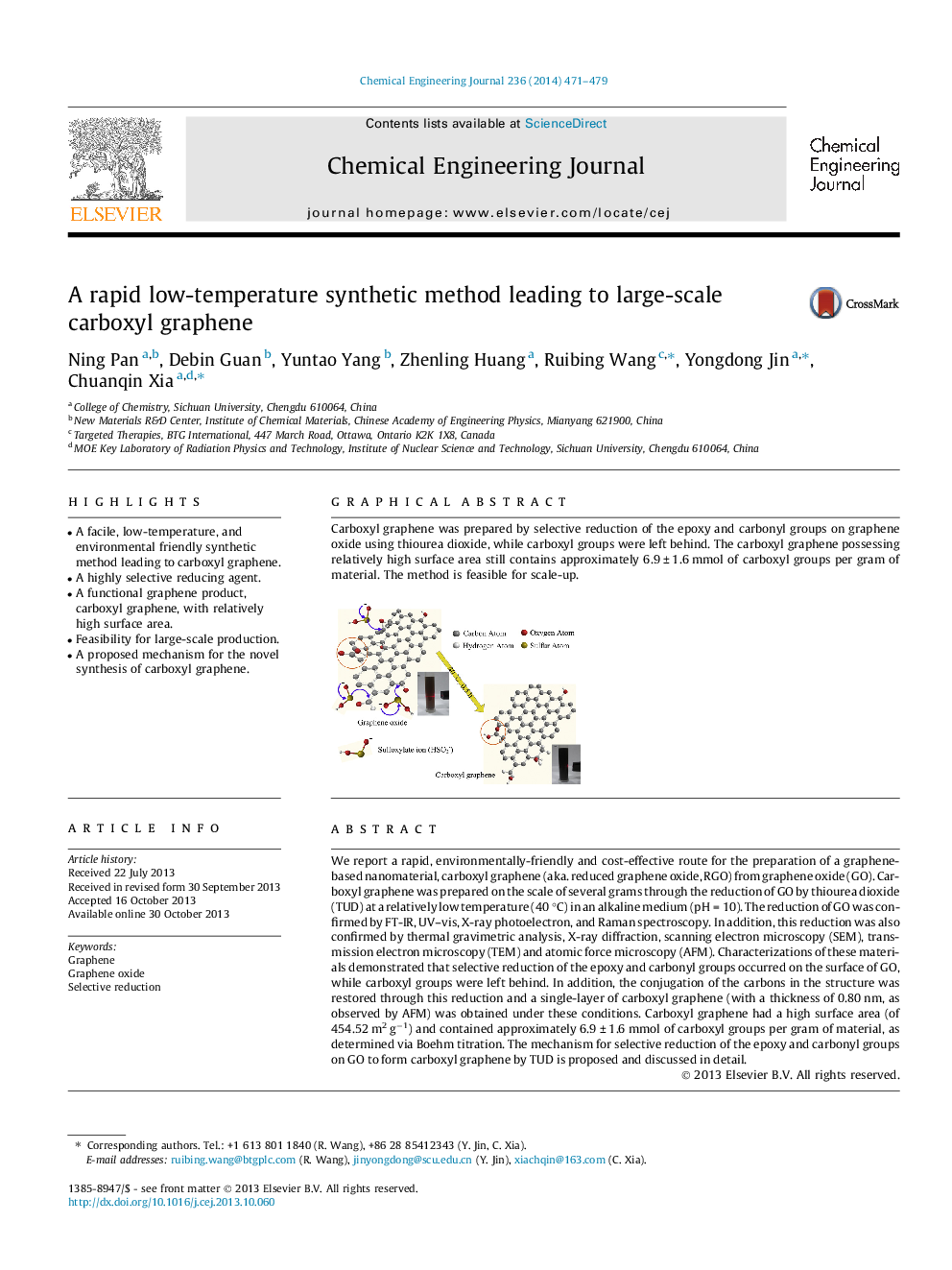| Article ID | Journal | Published Year | Pages | File Type |
|---|---|---|---|---|
| 148025 | Chemical Engineering Journal | 2014 | 9 Pages |
•A facile, low-temperature, and environmental friendly synthetic method leading to carboxyl graphene.•A highly selective reducing agent.•A functional graphene product, carboxyl graphene, with relatively high surface area.•Feasibility for large-scale production.•A proposed mechanism for the novel synthesis of carboxyl graphene.
We report a rapid, environmentally-friendly and cost-effective route for the preparation of a graphene-based nanomaterial, carboxyl graphene (aka. reduced graphene oxide, RGO) from graphene oxide (GO). Carboxyl graphene was prepared on the scale of several grams through the reduction of GO by thiourea dioxide (TUD) at a relatively low temperature (40 °C) in an alkaline medium (pH = 10). The reduction of GO was confirmed by FT-IR, UV–vis, X-ray photoelectron, and Raman spectroscopy. In addition, this reduction was also confirmed by thermal gravimetric analysis, X-ray diffraction, scanning electron microscopy (SEM), transmission electron microscopy (TEM) and atomic force microscopy (AFM). Characterizations of these materials demonstrated that selective reduction of the epoxy and carbonyl groups occurred on the surface of GO, while carboxyl groups were left behind. In addition, the conjugation of the carbons in the structure was restored through this reduction and a single-layer of carboxyl graphene (with a thickness of 0.80 nm, as observed by AFM) was obtained under these conditions. Carboxyl graphene had a high surface area (of 454.52 m2 g−1) and contained approximately 6.9 ± 1.6 mmol of carboxyl groups per gram of material, as determined via Boehm titration. The mechanism for selective reduction of the epoxy and carbonyl groups on GO to form carboxyl graphene by TUD is proposed and discussed in detail.
Graphical abstractCarboxyl graphene was prepared by selective reduction of the epoxy and carbonyl groups on graphene oxide using thiourea dioxide, while carboxyl groups were left behind. The carboxyl graphene possessing relatively high surface area still contains approximately 6.9 ± 1.6 mmol of carboxyl groups per gram of material. The method is feasible for scale-up.Figure optionsDownload full-size imageDownload as PowerPoint slide
